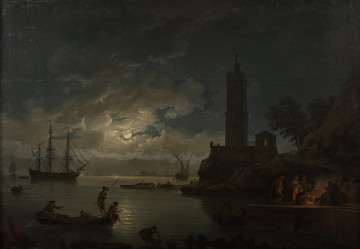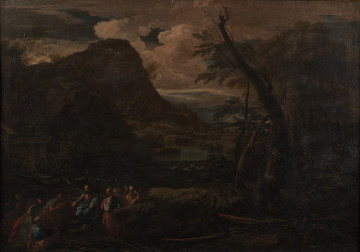
Port in the moonlight
18th century
Castle Museum in Łańcut
Part of the collection: European classics of modernity
Rafał Malczewski's work from the 1920s reveals the artist's style. He stopped painting urban and figural scenes and began creating landscapes where houses, people and animals play a lesser role. The dominant feature of these works is the construction of autonomous colour fields. It results in a group of landscapes that can be described as pure, i.e. combining the existing with the imaginary. Several paintings depict cottonwood trees, or more specifically, cottonwood branches enlarged to the size of trees. They have a picturesque character and, above all, make the depicted reality acquire a make-believe character. The collection of the National Museum in Szczecin includes the painting Jesień [Autumn] from 1926. The work combines a play on space and perspective with a landscape outside time motif. The colours in the painting are not typical of any of the seasons. The composition is governed by its shapes and colours and is constructed based on inaccurate symmetry as it is enclosed on the left and right by a cottonwood branch. The painter has managed to achieve the effect of unreal forms, which brings him closer to the idea of pure form formulated by Stanisław Ignacy Witkiewicz, his friend. Witkacy recalls that it is in this work that he sees one of the examples of the achievement of the theory postulated by him.
Beata Małgorzata Wolska
Author / creator
Dimensions
cały obiekt: height: 99 cm, width: 69 cm
Object type
painting
Creation time / dating
Creation / finding place
Identification number
Location / status

18th century
Castle Museum in Łańcut

17th century
Castle Museum in Łańcut

18th century
Castle Museum in Łańcut
DISCOVER this TOPIC
National Museum in Lublin
DISCOVER this PATH
Educational path